An often overlooked but critical part of a motorcycle ignition system is the HT lead and plug cap, if either of these fail the bike won’t run.
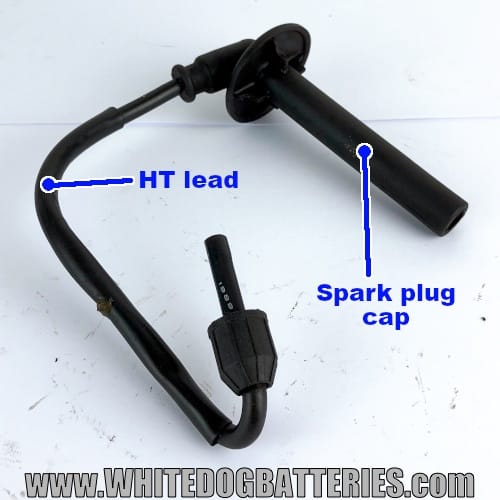
Note – The term ‘ignition system’ refers to the parts used to generate a spark at the spark plug. In modern motorcycles these are generally the spark plug, the coil and the CDI, older bikes used points (electronic contacts) instead of a CDI.
The above explanation is a very over simplified version of the parts used to generate a spark at the right time!
What do the motorcycle HT lead and plug cap do?
The job of the HT lead (high tension lead) and and spark plug cap is to transfer the charge generated by the ignition coil (around 15 to 20,000 volts) and pass this to the spark plug so the plug can provide a good, strong spark to ignite the fuel/air mix.
The 2 parts (HT lead and spark plug cap) are usually separate parts that can be disconnected from the coil and each other.
Note – If checking for faults, always be careful when testing the spark with the plug out of the engine not to have your hands or fingers near the plug or touching the engine as you are likely to get one hell of a shock!
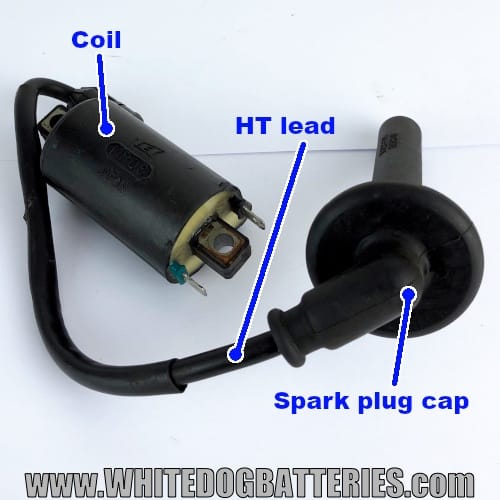
The 3 parts of the motorcycle coil, the ignition coil, HT (high tension) lead and spark plug cap
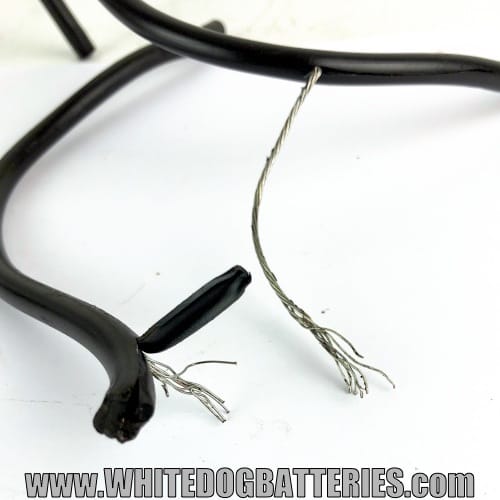
Exposed HT lead showing the internal wiring
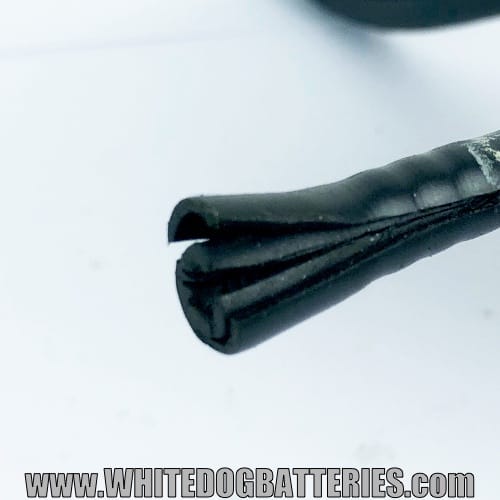
The outer sleeve of an HT lead. This is usually fairly thick rubber or silicone to insulate it from the voltage traveling down the lead.HT leads usually contain a copper core coated in a tin or stainless steel outer covering which is why they often look silver (the outer coating acts as a resistor).
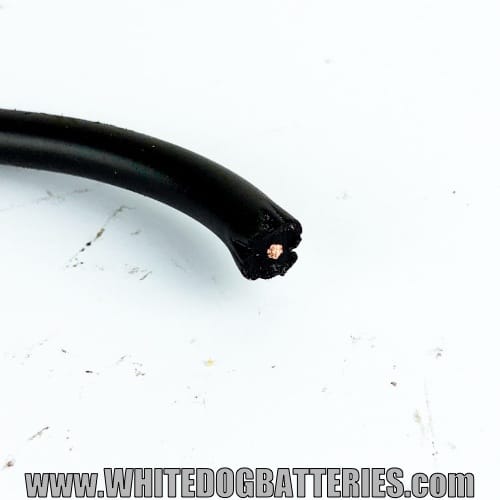
Cross section of an HT lead showing the copper cored wire.
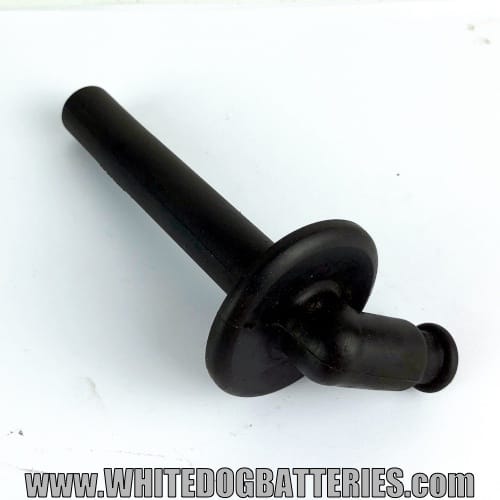
Motorcycle spark plug cap from a 400 or 600cc motorbike.
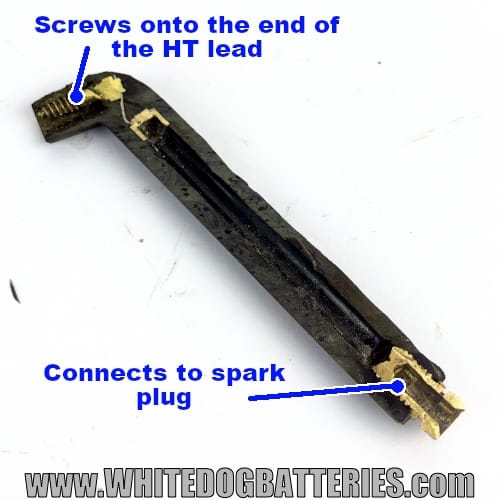
Cross section of a spark plug cap showing the internal parts. Normally there would be something joining the top and bottom parts of the coil together (it’s not there in the above pic).
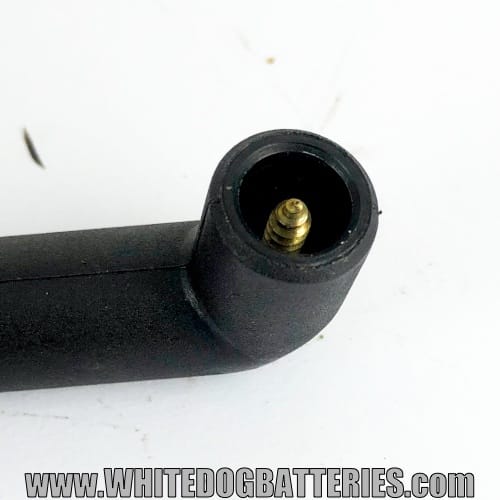
The screw in the top of the plug cap that screws onto the HT lead.
Note – This join between the HT lead and the plug cap can cause erratic running problems (due to loss of spark at the plug) if there not firmly screwed together, so it’s always worth checking!
As with any other part, HT leads and spark plug caps can start to fail with age, symptoms of these parts starting to fail can be:
- Bike being very difficult to start or not starting at all.
- Rough running engine.
- Engine misfiring.
- Rough idling.
- Intermittent engine cut outs.
- Engine management light coming on (on later bikes that actually have this light!).
- No spark at the spark plug
Note – There are other problems and parts on a motorcycle that can cause the above problems and sometimes these symptoms can be caused because the HT lead or plug cap has worked loose.
The first thing to check, before replacing any parts, is that the spark plug cap and HT leads are securely attached and screwed in as they can work loose over time.
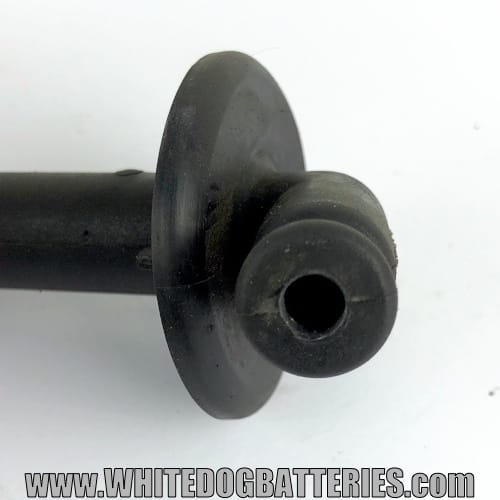
Part where the HT lead screws into the plug cap.
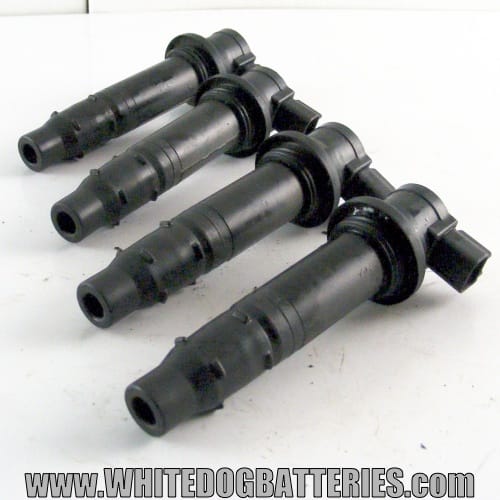
Combined plug coils and caps from a Yamaha YZF-R1 engine.Alot of later motorcycles use combined ignition coils and spark plug caps (also called ‘coil on plug’ systems) which does away with the need for HT leads and a separate coil and is less prone to failure as there’s less parts.
Thanks to:
Good site with lots of good info about HT leads: Rmwalshltd.co.uk
Wiki article about spark plugs wires: Wikipedia.org/wiki/Spark_plug_wires
Disclaimers:
The information provided on this page is ‘to the best of our knowledge’ and should not be taken as 100% accurate!!
To keep this page as a free resource for people to use, there are affiliate links (mainly Amazon) throughout the article. These affiliate links help maintain the cost of running this blog (basically, if you visit Amazon through one of the links and buy something, we make a few pence!).

Leave a Reply